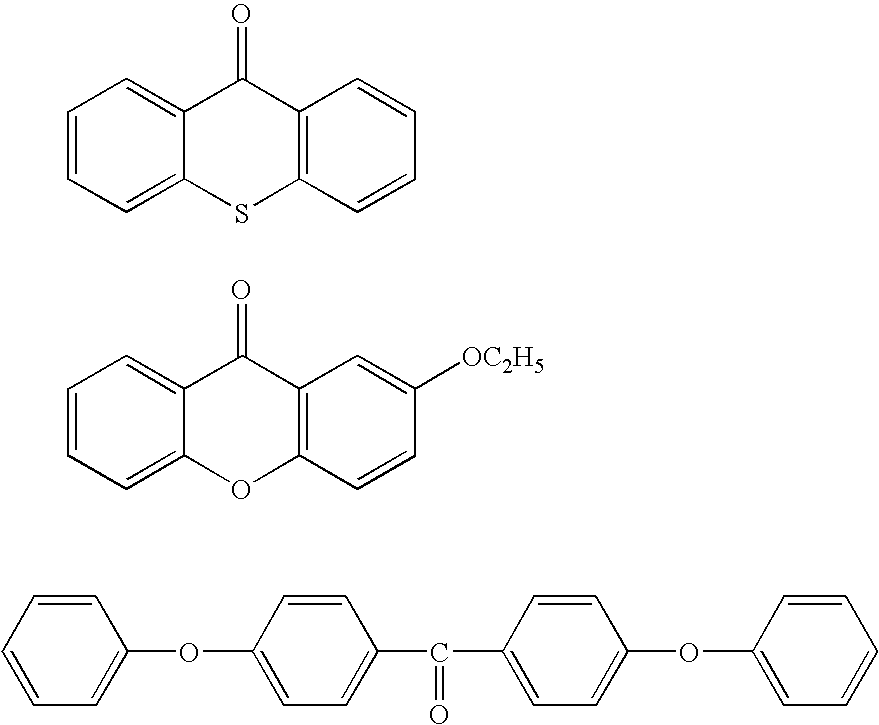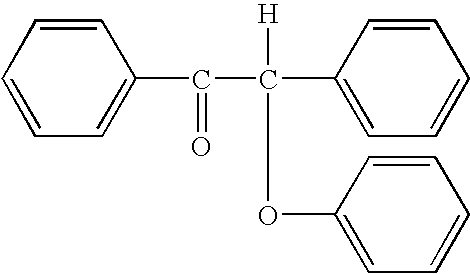Planographic printing plate precursor and stack thereof
a technology precursor, which is applied in the direction of lithography, photosensitive materials, instruments, etc., can solve the problems of inefficient exposure step and lack of planographic printing plate precursor
- Summary
- Abstract
- Description
- Claims
- Application Information
AI Technical Summary
Benefits of technology
Problems solved by technology
Method used
Image
Examples
example 1
(Preparation of Support)
[0303] An aluminum plate of JIS A1050 with a thickness of 0.30 mm and a width of 1030 mm was subjected to surface treatment as shown below.
[0304] In the surface treatment, the following various treatments (a) to (f) were continuously carried out. After each treatment and water washing, a nip roller was used to drain off.
[0305] (a) The aluminum plate was subjected to etching treatment carried out in the following condition: concentration of caustic soda: 26% by mass, concentration of ammonium ions: 6.5% by mass and temperature: 70° C., to dissolve 5 g / m2 of the aluminum plate, followed by washing with water.
[0306] (b) The aluminum plate was subjected to desmatting treatment carried out using an aqueous 1 mass % nitric acid solution (including 0.5% by mass of aluminum ions) kept at 30° C. by spraying, followed by washing with water.
[0307] (c) The aluminum plate was subjected to electrochemical surface roughing treatment carried out continuously by using 6...
examples 2 to 12
[0321] Planographic printing plate precursor of Examples 2 to 12 were prepared in a similar manner as in Example 1, except that the Chemipearl W-308 used as the filler in the mixed aqueous solution (protective layer coating solution) of Example 1 was replaced with the compound shown in Table 2 and the content ratio was changed to the composition shown in Table 2. The composition was adjusted such that when the content ratio of the filler was increased, the content of the polyvinylalcohol was decreased.
example 13
[0322] A planographic printing plate precursor of Example 13 was prepared in a similar manner as in Example 2, except that the synthetic mica was left out from the oxygen barrier layer coating solution of Example 2.
PUM
| Property | Measurement | Unit |
|---|---|---|
| volume average particle diameter | aaaaa | aaaaa |
| temperature | aaaaa | aaaaa |
| particle diameter | aaaaa | aaaaa |
Abstract
Description
Claims
Application Information
 Login to View More
Login to View More - R&D
- Intellectual Property
- Life Sciences
- Materials
- Tech Scout
- Unparalleled Data Quality
- Higher Quality Content
- 60% Fewer Hallucinations
Browse by: Latest US Patents, China's latest patents, Technical Efficacy Thesaurus, Application Domain, Technology Topic, Popular Technical Reports.
© 2025 PatSnap. All rights reserved.Legal|Privacy policy|Modern Slavery Act Transparency Statement|Sitemap|About US| Contact US: help@patsnap.com



